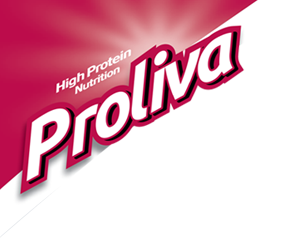-
Nutritional strategies for preserving muscle in elderly people
30.10.2017A very real challenge of older people is one of preserving their muscle mass (or enhancing it) and meeting the nutritional requirements to do so.
This is especially true when it comes to attaining an optimal amount of vitamin D and protein. Scientists know that age-related muscle loss can be slowed or arrested through strategies such as consuming a high-quality protein source with readily assimilated essential amino acids throughout the day — so-called protein staging.
An essential amino acid that promotes muscle synthesis is leucine found in whey protein. Protein should be spread out in 25-30 grams of protein at each meal and depending on the size of the individual that should be in either three, four, or fiver meals per day servings and it should be clean sourced, and high quality.
A recent study published in the Journal of Nutrition concluded that the combination of whey protein and vitamin D helps significantly increase muscle mass in healthy older men.
Vitamin D is essential for other reasons besides muscle growth, as well. Most people are familiar with the notion that vitamin D helps promote healthy strong bones and the avoidance of osteoporosis or osteopenia by assisting in the absorption of calcium.
However, there is increasing evidence that low levels of vitamin D lead to an increase in type 1 diabetes, muscle and bone pain, breast cancer, colon cancer, prostate cancer, ovarian cancer and esophageal carcinoma.
There is mounting evidence that vitamin D plays a role in reducing blood pressure, lowering the risk of heart attack, as well as reducing the chances of developing rheumatoid arthritis, and multiple sclerosis.
Dr. Holick, head of the Vitamin D Skin, and Bone Research Laboratory at Boston University School of Medicine, notes that vitamin D is one of the most potent inhibitors of cancer cell growth, as well as an immune system regulator and stimulates the pancreas to produce more insulin.
Dr. Holick theorizes that one theory as to how vitamin D reduces blood pressure is that it decreases the production of the hormone renin which plays a significant role in hypertension.
A study published in the Journal of the American Medical Association in Dec. of 2003 noted that veterans ages 50 to 75 who consumed more than 645 IU of vitamin D daily with more than 4 grams of cereal fiber had a 40 percent reduction in the risk of developing pre-cancerous colon polyps.
Added to this study, another research report in the Journal of American Geriatrics Society in February 2004 demonstrated that elderly women who took a vitamin supplement plus calcium for three months reduced their risk of falling by 49 percent compared with the women who took calcium only.
A January 2004 study published in the journal Neurology found that women who take at least 400 IU of vitamin D daily are 40 percent less likely to develop multiple sclerosis.
However, most researchers believe that the government’s recommendations of 200 IU of vitamin D per day are too low.
Holick states that an optimal dose is 1,000 IU daily and that the vitamin is well absorbed from either food or from supplements.
You can get 425 IU in a 3-ounce serving of salmon, and about 200 IU of vitamin D from 2 glasses of fortified milk.
But people at an older age can find getting adequate amounts of vitamin D might be a challenge, especially when relying on dietary sources only.
Regular sun exposure can stimulate your skin to produce vitamin D. However, it can also stimulate your skin to burn or develop cancer.
The good news is you can’t overdo the amount of vitamin D manufactured by your skin as you might exceed the upper limit of 2,000 IU a day, if taking too many supplements.
Vitamin D is a fat-soluble vitamin and an overdose could leave you with muscle weakness, excessive bleeding or lead to kidney stones or renal damage. Supplement wisely with quality products for both protein and vitamin D ensuring that you reach optimal amounts, so that you do your body good.
Source: Nutritional strategies for preserving muscle – Thegardenisland.com: Lifestyles
Latest Blog Post
- Sugary Drinks Linked to a Higher Cancer Risk
- The Latest Research on Protein and Muscle-Building
- 27 Health and Nutrition Tips That Are Actually Evidence-Based
- Tall order: More to good growth in toddlers than just measurements
- Millions of cardiovascular deaths attributed to not eating enough fruits and vegetables

